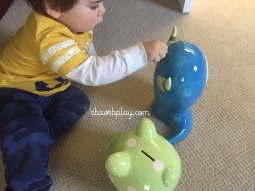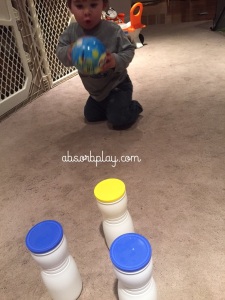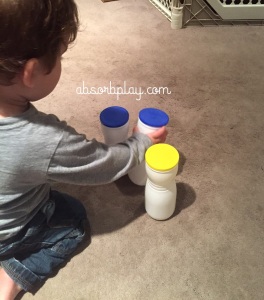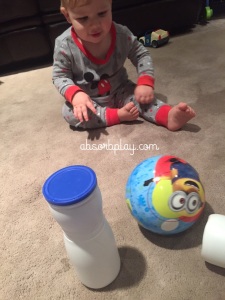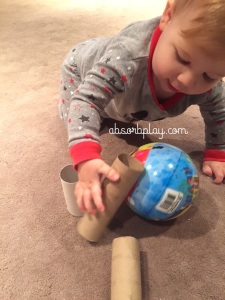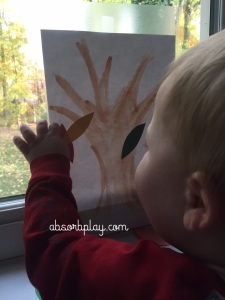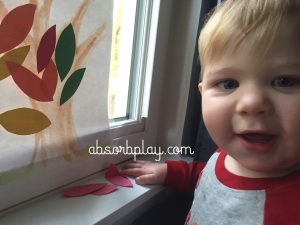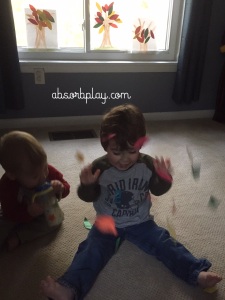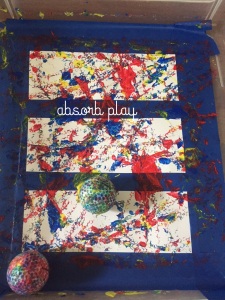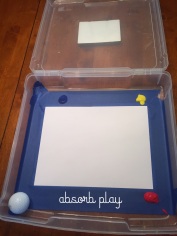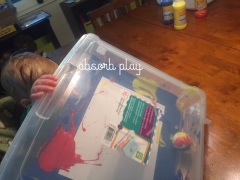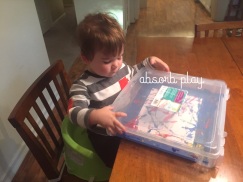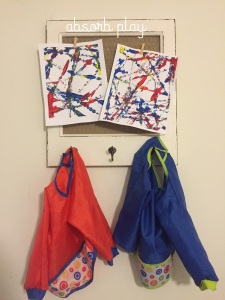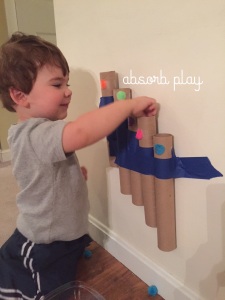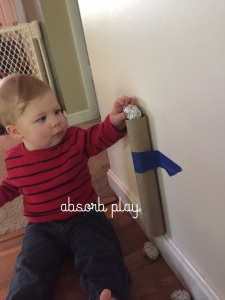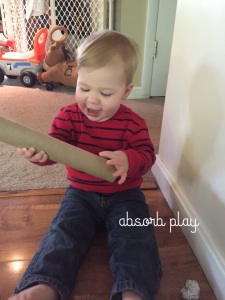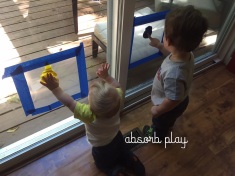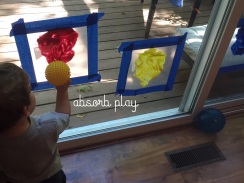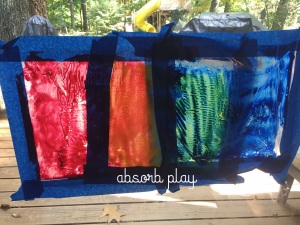One of the things that makes family members and friends feel special is when a little one recognizes them. This can be difficult if you live far from loved ones and don’t get to see them often. Additionally, babies and toddlers with stranger anxiety might react poorly to a person they do not see often, even if it is someone you love.
In order to help our little guys learn names and become familiar with family and friends, I created friendly faces flash cards using photos of family members smiling (often pulled from Facebook). I added the person’s name to each picture and then simply printed them on cardstock. In addition to family that is several hundred miles away, I included immediate family members that live in our house so that my youngest son could work on saying names like “Dada” and “Mama” as well as learn to say his brother’s name.
I opted to use these cards in a sensory bin to make discovering the people more fun for the boys. For my two year old I put dry peas and elbow noodles into a bin and then hid the flashcards throughout the bin for him to dig out. For my one year old who likes to put things in his mouth, I opted for filling a bin with ball pit balls and mixing the flash cards in. They each searched through their bins and would pull a card. When they pulled out the friendly face card I would say then name excitedly and say something we enjoy about the person. For example, “Dad. Dad loves to read you stories.” We would put the cards aside until they had all been found then they put them back into the bins and wanted to start again.
The best part was of this activity we were able to use the flashcards apart from the sensory bins. Before we visit with family and friends I like to bring the cards out at breakfast revisit the friendly faces in simple flashcard form. These are also great to use in travel in the car or on planes when you are going to visit loved ones.

Objectives:
- cognitive development: facial and name recognition
- physical skills: fine motor skills
- engaged senses: touch, sight, and sound
Materials:
- cardstock
- photos
- bin filler (dry beans, uncooked pasta, rice cereal, cranberries, balls, etc)
Differentiation ideas:
- use the cards to play a flash card game in the car or plane
- create two of each card and play a matching memory game
Level of mess:
- clean

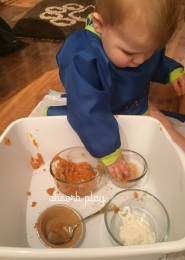 We have been working with both boys on transferring objects from one container to another. Our two year old, Roo, is far more controlled in this process than our almost one year old, Moose, but practice is key.
We have been working with both boys on transferring objects from one container to another. Our two year old, Roo, is far more controlled in this process than our almost one year old, Moose, but practice is key.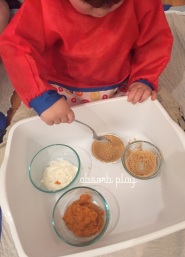
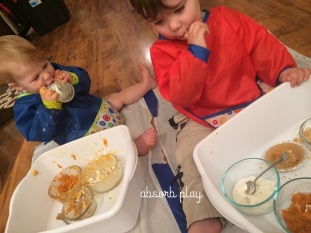
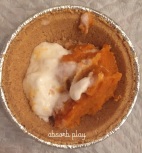



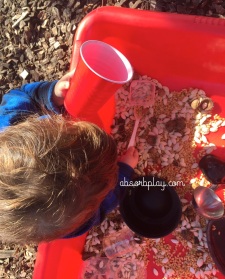

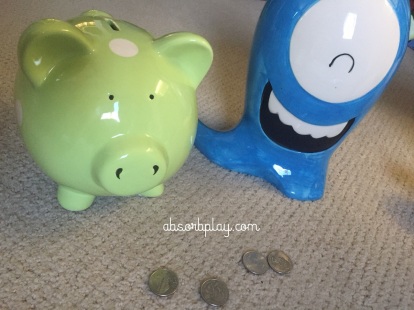
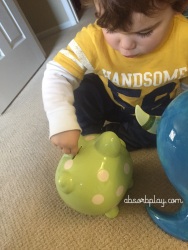 Putting coins in a small opening on a bank is a fantastic way to work on fine motor skills and hand-eye coordination. This task was actually quite challenging for my son at first. I modeled how to put a coin into the bank and then allowed him to try it on his own without correction until he had success. After several attempts discovered that he had to align the coin perfectly before applying pressure. (I love watching him figure things out!) Once he developed this understanding the task became far simpler with fewer misses. The larger quarters were much easier for him to work with than smaller dimes.
Putting coins in a small opening on a bank is a fantastic way to work on fine motor skills and hand-eye coordination. This task was actually quite challenging for my son at first. I modeled how to put a coin into the bank and then allowed him to try it on his own without correction until he had success. After several attempts discovered that he had to align the coin perfectly before applying pressure. (I love watching him figure things out!) Once he developed this understanding the task became far simpler with fewer misses. The larger quarters were much easier for him to work with than smaller dimes.